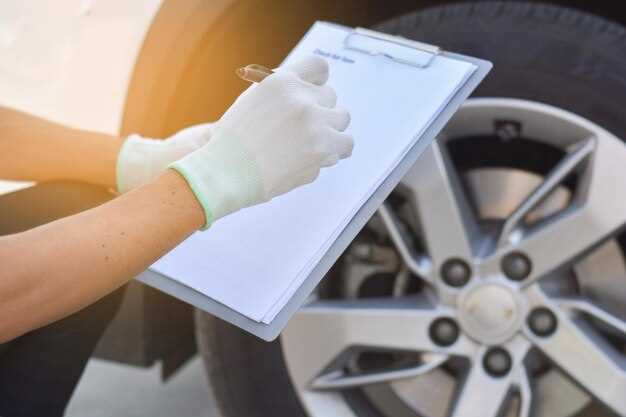
When considering a vehicle purchase, one of the most critical aspects to evaluate is the condition of the paintwork. A thorough inspection of the vehicle’s exterior can reveal much about its history and potential hidden issues. This step is essential to ensure that you are making a wise investment, rather than falling victim to unforeseen repairs and maintenance costs later on.
During the inspection, it is crucial to look for any signs of damage, such as scratches, dents, and discoloration. These imperfections can indicate previous accidents or poor maintenance practices. Moreover, examining the quality of the paint helps to assess whether the vehicle has undergone a professional respray or if it retains its original finish. Anomalies in the paintwork can also be an indicator of rust or corrosion, which could lead to more extensive damage in the future.
By prioritizing a detailed inspection of the car’s paintwork, potential buyers can better understand the vehicle’s overall condition and make an informed purchase decision. Understanding these key checks not only enhances the value of your investment but also ensures that the car remains aesthetically pleasing and functional for years to come.
Identifying Paint Damage and Imperfections
When considering a car purchase, a thorough inspection of the paintwork is essential to identify any potential damage or imperfections. The quality of a vehicle’s paint can affect not only its aesthetic appeal but also its resale value. Begin by examining the entire surface of the car under natural light, as this will help reveal inconsistencies that may be hidden in artificial lighting.
Look for scratches, chips, and dents on the paint. Small scratches may be superficial, while deeper ones can indicate prior accidents or neglect. Pay particular attention to the edges of panels and areas around the headlights and bumpers where damage is more common. Additionally, check for any signs of rust, as it can develop under paint damage over time.
Another crucial aspect of paint inspection is to check for unevenness in color or texture. Variations in shade might suggest previous repainting, which could be a warning sign of underlying issues. Use your fingers to feel the surface; a rough or gritty texture could indicate contamination or poor application techniques.
Furthermore, assess the paint’s glossiness. If some areas appear dull or faded compared to others, this could point toward damage or poor maintenance. Spots that feel sticky or have a residue may hint at inadequate cleaning products being used in the past, which can harm the paint.
Finally, during your inspection, listen for any unusual sounds when tapping on the panels. Hollow noises could suggest poor adhesion between layers, potentially resulting in more extensive issues down the road. By thoroughly evaluating these aspects of the paint, buyers can make informed decisions during their vehicle purchase.
Evaluating Paint Quality and Consistency

When considering a car purchase, it is essential to thoroughly inspect the paintwork to ensure its quality and consistency. A well-maintained paint job not only enhances the vehicle’s appearance but also serves as an indicator of how well the car has been cared for by previous owners.
Start your inspection by assessing the overall finish of the paint. Look for any variations in color or texture across different panels. Uneven paint can signal previous repairs or respraying, which may suggest underlying issues. Stick with vehicles that exhibit a uniform color and finish across the entire body.
Next, check for paint thickness. Irregular thickness could indicate that the car has been involved in an accident and has undergone bodywork. You can use a paint thickness gauge for this purpose; a standard reading typically ranges from 4 to 8 mils. Be cautious if you find areas significantly thicker than the average, as they might have been poorly repaired.
Additionally, examine the paint for any defects such as scratches, swirl marks, or orange peel texture. These imperfections can affect not only the aesthetic appeal but also tie into the car’s value. Minor blemishes can often be corrected with polishing, while deeper scratches may require professional attention.
Another critical aspect is the presence of clear coat. A good quality paint job will have a clear coat layer that protects the color underneath. Inspect the edges of panels and areas where clear coat wear is common, such as the front bumper and door handles. A deteriorating clear coat may lead to fading or oxidation over time.
Lastly, don’t forget to check the wheel wells, undercarriage, and other less visible areas. These spots can reveal past accidents that might have resulted in repainted sections. Ensure that these areas match the overall color and condition of the exterior paint.
A thorough evaluation of paint quality and consistency is a crucial step during your car inspection. By taking the time to carefully assess the paintwork, you can make an informed decision that affects both the purchase price and the future value of the vehicle.
Using Tools for Accurate Paint Thickness Measurement

When considering a car purchase, it is essential to evaluate the condition of the paintwork accurately. One of the most effective ways to achieve this is by measuring the thickness of the paint. Using specialized tools can help identify previous repairs, repainting, or potential issues that could affect the vehicle’s value and longevity.
One commonly used tool for this purpose is a paint thickness gauge. This device measures the thickness of the paint layer applied on the car’s surface. Accurate measurements can indicate whether the car has been repainted or if there are areas with excessive coatings, potentially signaling past accidents or poor repairs. Most paint thickness gauges are user-friendly, featuring a digital display that provides instant readings.
To ensure reliable results, it is important to know the typical paint thickness for your specific car model, as variations do exist. Standard paint thickness usually ranges from 100 to 200 microns, depending on whether the original paint is still intact or if it has undergone multiple resprays. When measuring, take readings from various points across the vehicle, particularly on the panels and areas that are prone to damage.
Additionally, some tools offer magnetic or ultrasonic measurement methods, each with its advantages. Magnetic gauges are best used on ferrous surfaces, while ultrasonic gauges work well on non-ferrous materials. When using these tools, be sure to familiarize yourself with the manufacturer’s instructions to achieve the most accurate readings.
In conclusion, utilizing paint thickness measurement tools is a crucial step during a car purchase. By assessing the paint accurately, potential buyers can make well-informed decisions, avoiding hidden issues that could arise from poor quality paintwork or accidental damage.






